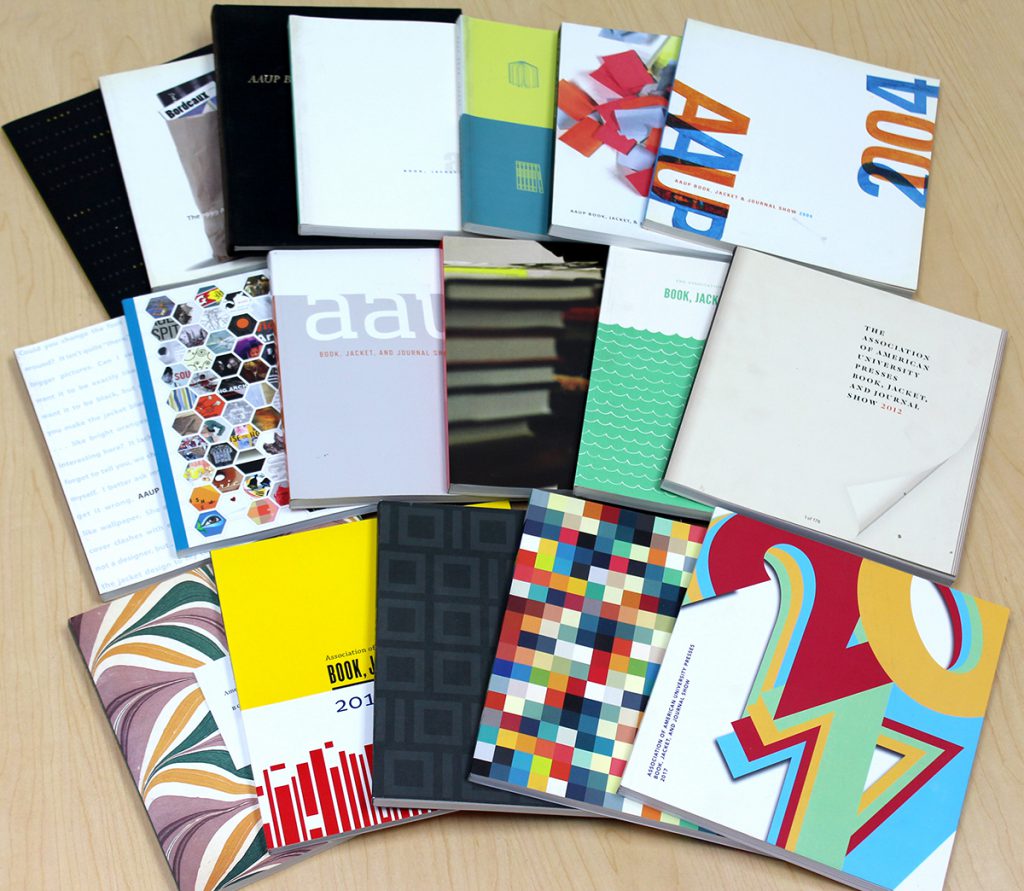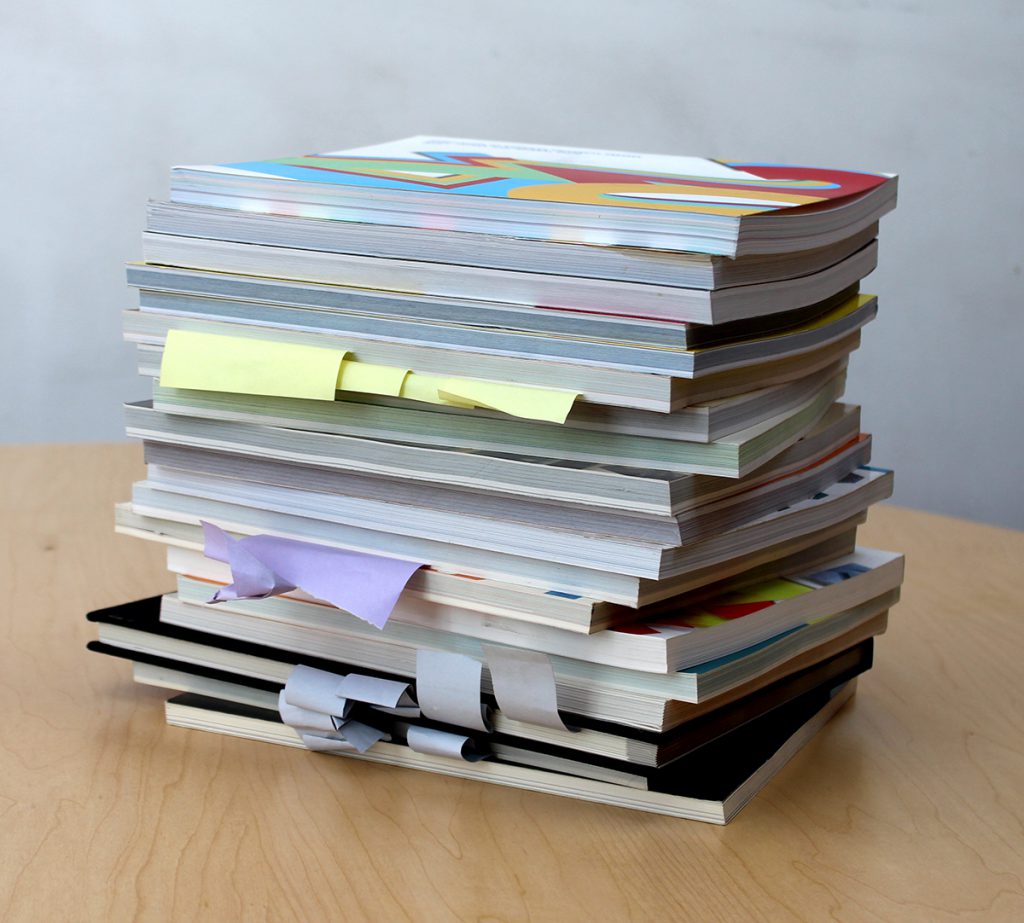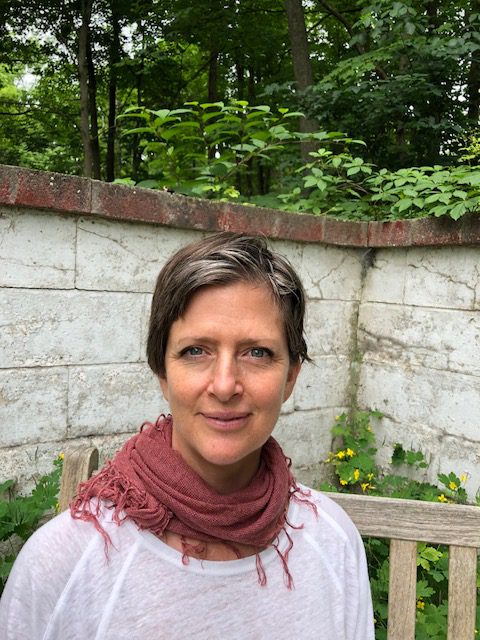Behind the Scenes of the Association of University Presses Book, Journal, and Jacket Show

“We all get to see the books other presses publish while admiring the incredible creativity of our colleagues.”
∼ Lisa Hamm, Senior Designer, Columbia University Press
In honor of the AUP conference, today we’re interviewing Julia Kushnirsky (art director) and Lisa Hamm (senior designer) at Columbia University Press about their experience working with the Association of University Presses Book, Journal, and Jacket Show.
• • • • • •
Julia and Lisa, thank you for the opportunity to interview you about your experience as designers in academic publishing and with the AUP community—specifically the Book, Journal, and Jacket Show. I’d like to begin by learning a little about your background. How long have you been involved in book publishing, and how did you become involved with the academic publishing community?
Julia: I have been in book publishing for twenty-five years. I started out in trade publishing, where the design community had its own events, and it felt like everyone knew each other. I moved into academic publishing ten years ago, when I became an art director at Columbia University Press. I had done some freelance work for academic publishers before, but when I started, I didn’t know any academic-publishing designers. As I looked at the AUP yearly catalogs, I was impressed with the talent and skill of the designers for academic books. Through the years, I’ve noticed that there has been more and more crossover between trade and scholarly publishing. Many trade designers worked on academic books and vice-versa. I like to think that I contributed to it a little bit by hiring some trade designer to work on Columbia covers. As an art director, it warms my heart to see so much creativity brewing in the design community.
Lisa: I’ve been a designer at Columbia University Press for nineteen years. I had just returned to the East Coast after ten years in California, and I had spent the last four years there working as a graphic designer at Adobe Systems. I saw the posting for the job at Columbia University Press, and I liked the idea of working for a not-for-profit press. My background is traditional. I have a BA in fine arts, but I had always had an interest in design: posters, printmaking, book covers, books, and book design in general. After college, I took classes in design. I did some illustration work, design work, and then, when I moved to California, I wanted to take advantage of being in Silicon Valley. So I transitioned from traditional media to computers. I went back to school at UC Santa Cruz. I worked in technical publications, with some freelance poetry and tech books on the side. Adobe allowed me to have access to all the new software and understand its capability. I took my technical skills, my fine arts, and design skills and brought them to CUP, where I’ve had the pleasure to work on a variety of books with varying degrees of complexity.
 Now let’s shift gears a little. You’ve both been involved with the AUP Book, Journal, and Jacket Show. Julia, you chaired the committee in 2017, and, Lisa, you were part of the committee last year and designed the catalog this year, is that correct?
Now let’s shift gears a little. You’ve both been involved with the AUP Book, Journal, and Jacket Show. Julia, you chaired the committee in 2017, and, Lisa, you were part of the committee last year and designed the catalog this year, is that correct?
Julia: Yes, that’s correct. I got involved with AUP Book, Journal, and Jacket Show because I wanted to get to know the fantastic designers whose work I’d seen in the catalogs, and I wanted to be more involved with the academic-publishing community. I had wanted to be part of the show for several years before the opportunity came up.
The first time I attended the Book, Journal, and Jacket show was in 2012. That year, the annual meeting for what was then called the American Association of University Presses was in Chicago. During the meeting, I asked around about how to get on the show committee. No one knew, but someone suggested asking your press director to nominate you. A few years later, Jennifer Crewe became director of Columbia University Press. I knew that she had been very active with AUP for many years. So I asked her if she could find out if there were any openings on the Book, Journal, and Jacket show committee before the 2016 meeting. She came back with the news that exceeded my expectations—the chair position was open! I was thrilled and jumped on it. Thank you, Jennifer!
That sounds like incredible timing and luck. What was it like to be the chair of the committee? What did you consider in selecting judges?
Julia: There were six other members on the committee, and we divided the tasks between us. As the chair, my role was to ensure that we met all of our deadlines and to report on our progress to AUP. My favorite part was selecting the judges and working with them for two days at the AUP offices. Selecting the judges was challenging. They had to be well-respected designers or other professionals familiar with academic publishing but not currently employed by any of the member presses. They have to be willing to travel to New York to judge the show and to the annual meeting to be on a panel to speak about their experience.
We chose two judges with cover-design experience and two who understood book interior design. After all the entries were collected and divided into categories, the cover judges and the book judges worked in separate rooms. They pored over hundreds of entries, and chose about fifty books and fifty covers. But there are always many more deserving entries than there are winning spots. When I was at the judging, we all oohed and aahed over so many beautiful books! Ultimately, the judges tended to choose designs that had a concept and told a story in an elegant and original way. As soon as the entries were selected, we posted the list of winning entries online. I wanted to include all the images of the winning books to be on the AUP website right away. At the time no one saw the winning designs until the catalog came out months later. I am happy that now it’s become a standard practice to post the winners on the AUP site and that the winners can be seen not only by an AUP community but by the world at large. I loved working with members of other presses! It was more rewarding than I expected. We are an extremely warm and lovely bunch of people.
Wow! Who knew the show was so involved? Lisa, what inspired you to become engaged with the show?
 Lisa: I wasn’t aware of the book show until I started at Columbia University Press. We had all the catalogs from way back in our design library. There were terrific examples of work and very insightful comments by the judges and designers. For a designer, I felt it was an education in itself. Just looking through the catalogs, you learned the names of designers who won year after year: Richard Eckersley, Rich Hendel. Last year I created the Call for Entry cards, the online forms, and web banner, and I helped find judges and assisted wherever I could. I had wanted to do the catalog for a few years, but I believe it took the work I did last year to get me in line to do it.
Lisa: I wasn’t aware of the book show until I started at Columbia University Press. We had all the catalogs from way back in our design library. There were terrific examples of work and very insightful comments by the judges and designers. For a designer, I felt it was an education in itself. Just looking through the catalogs, you learned the names of designers who won year after year: Richard Eckersley, Rich Hendel. Last year I created the Call for Entry cards, the online forms, and web banner, and I helped find judges and assisted wherever I could. I had wanted to do the catalog for a few years, but I believe it took the work I did last year to get me in line to do it.
What was it like to work on the catalog?
Lisa: It was fun, challenging, and quite a bit of work with lots of moving parts. I loved the contact with other designers and having the opportunity to pay attention to the work in a way I hadn’t in the past.
Knowing what you know now, would you do anything differently? What advice, if any, would you give to next year’s catalog designer?
Lisa: Well, I’d love a do-over now that I’ve had the experience, but for the next person: be organized and prepared. Don’t get too complicated in your design; as I said before; there are a lot of moving parts.
The next couple of questions are for both of you. What value do you believe the Book, Journal, and Jacket Show and the Catalog bring the AUP community?
Julia: The Book, Journal, and Jacket Show statement is education. It’s essential for us to share and celebrate great work, as well as educate each other and the next generation of designers.
Lisa: It’s very valuable. It brings together the presses in a wonderfully visual way. We all get to see the books other presses publish while admiring the incredible creativity of our colleagues. You can step back and enjoy it as a lover of books and a participant in the production of a book.
Why do you think it’s important for members of the AUP community (from both large and small presses) be involved with each other or the show?
Julia: Designers, as well as other professionals, will find an inspiring and supportive community at AUP, no matter how large or small their press is.
Lisa: Well, as a designer, you can drool over the production quality of some of the books and admire the creativity and inventiveness of designers who have less at hand to work with. You get to see some of the best examples in the industry.
We’ve talked about your involvement in the AUP community. What advice would you give to designers just starting out and to those who would like to be more involved with the AUP?
Julia: Stay informed. Read the AUP posts on the listserv, follow other presses, reach out to your counterpart at another press. Ask to go to the annual meeting or apply for a grant to attend the AUP yearly meeting.
Lisa: AUP is a great organization to be a participant in. Take some time to look at the catalogs from previous years. They can be an education in themselves. You see some of the best of book design. I would recommend adding yourself to one of the listservs and enjoying the fun design-related posts. Read the more technical queries and share ideas. I believe participation begins with making it known you are interested. E-mail people on the listserv who are members and reach out to your art director or EDP manager.
Thank you Julia and Lisa, for sharing your experience and advice. Anyone looking to be actively involved in the AUP community can check out the Resources page on the AUP website.







